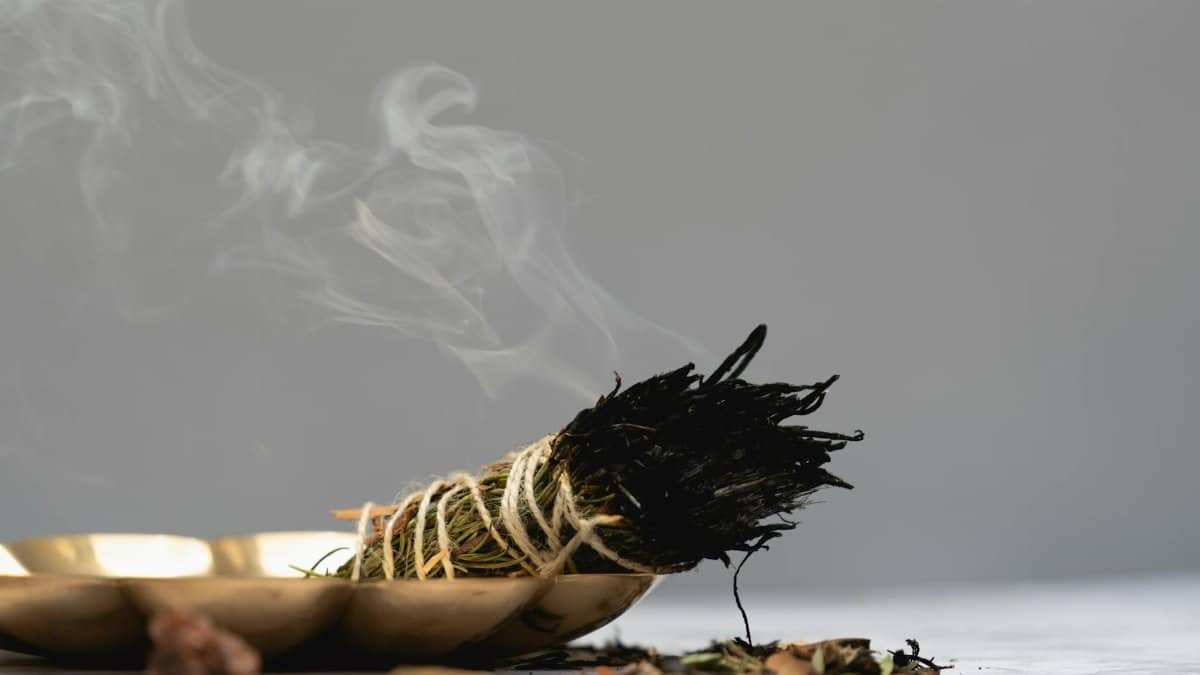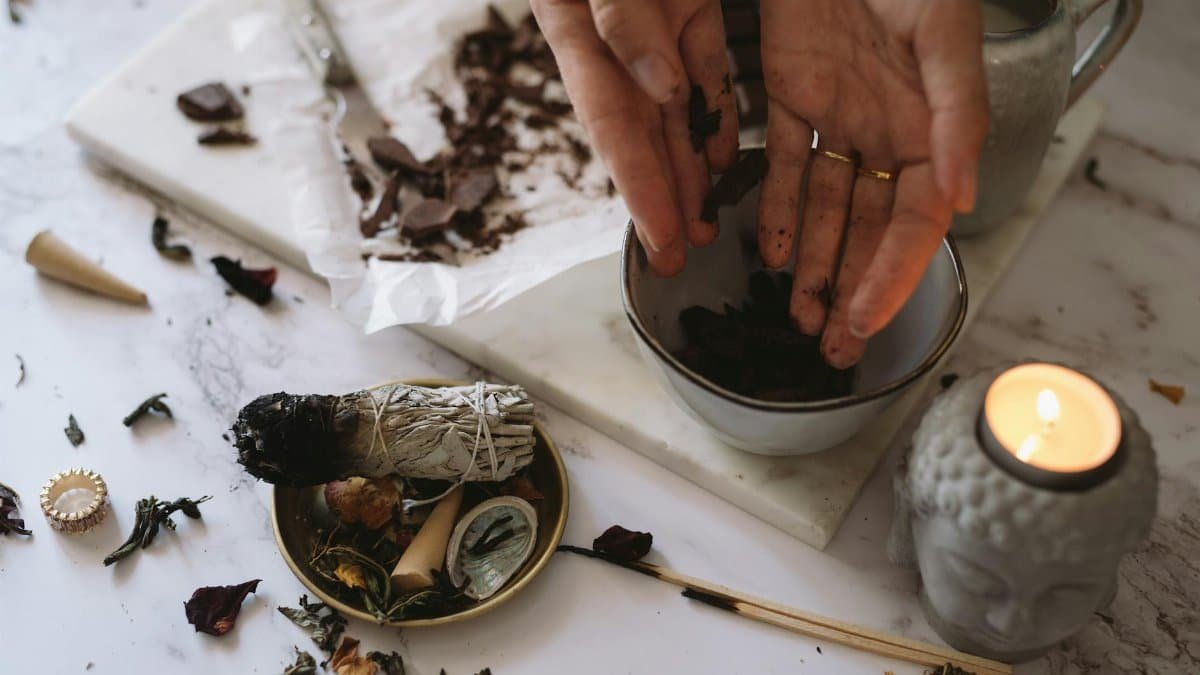Imagine a quiet forest clearing, centuries ago, where a Cherokee healer kneels beside a small fire, carefully selecting leaves and roots from a woven basket. Each plant, chosen with purpose, carries a story of balance and peace, passed down through generations. These are the foundations of what we now call Cherokee calm herbs—traditional plants used by Cherokee healers to soothe the spirit and ease the mind. In a world that often feels unrelenting in 2025, this ancient wisdom offers a grounding perspective. As stress and anxiety continue to shape modern life, many Americans are turning to herbal traditions for relief, seeking natural ways to restore calm. The practices of the Cherokee, rooted in a deep connection to the earth, provide a window into how specific herbs were—and still can be—tools for emotional and spiritual harmony.
1. Passionflower: A Gentle Sedative

Among the most revered of Cherokee calm herbs, passionflower stands out for its delicate beauty and potent effects. Known scientifically as Passiflora incarnata, this vine with intricate purple blooms was used by Cherokee healers to quiet restless minds. They brewed it into teas or tinctures to ease anxiety and promote sleep. Modern research backs this up—a study published by the National Institutes of Health found that passionflower can reduce symptoms of anxiety as effectively as some pharmaceutical options. You can explore the findings yourself at National Institutes of Health. Today, herbalists still recommend it for those who struggle with overthinking late at night, a nod to its timeless relevance.
Picture someone in a small Appalachian town, steeping passionflower tea after a long day. The floral scent rises with the steam, a moment of pause in an otherwise hectic life. It’s not hard to see why this herb remains a staple for calming the spirit.
2. Blue Cohosh: Easing Emotional Tension

Blue cohosh, or Caulophyllum thalictroides, was another tool in the Cherokee healer’s kit. Often prepared as a decoction, its roots were used not just for physical ailments but to release emotional strain. The plant’s deep blue berries belie its strength—it was believed to help balance moods, especially during times of grief or upheaval. While scientific studies on its calming effects are limited, ethnobotanical records, like those archived by the University of Michigan, detail its historical use among Indigenous peoples. Learn more at University of Michigan Ethnobotany.
Its application wasn’t just practical; it carried a spiritual weight. Healers saw it as a way to realign the spirit with the body, a concept that resonates even now for those seeking holistic peace.
3. Skullcap: A Nerve Soother

What if a single herb could quiet the buzzing nerves that keep us awake? Cherokee healers often turned to skullcap, or Scutellaria lateriflora, for just that. This unassuming plant, with its small blue flowers, was dried and steeped to create a remedy for nervousness and irritability. Research from the National Center for Complementary and Integrative Health supports its potential, noting skullcap’s role in reducing stress responses. Dive into their overview at NCCIH.
Historically, it wasn’t just about the body. The Cherokee viewed it as a bridge to inner stillness, a way to reconnect when life felt fragmented. That idea holds weight in 2025, as more people grapple with digital overload and constant connectivity.
4. Chamomile: Universal Calm

While chamomile is often associated with European traditions, it also found a place among Cherokee calm herbs. Matricaria chamomilla, with its daisy-like flowers, was used for its mild sedative properties, often blended with other herbs to enhance relaxation. A 2016 study highlighted by the National Institutes of Health confirms chamomile’s effectiveness in reducing anxiety symptoms. Check the details at NIH Chamomile Study.
Its gentle nature made it a favorite for all ages. Imagine a Cherokee elder teaching a young apprentice to crush the dried flowers, explaining how even the simplest plants carry profound power. That simplicity still appeals to those seeking a soft entry into herbal remedies.
5. Valerian Root: Deep Rest

Valerian root, known as Valeriana officinalis, was prized by Cherokee healers for its ability to induce deep, restorative sleep—a cornerstone of spiritual calm. Its earthy, pungent smell might not win any awards, but its impact is undeniable. Often prepared as a strong infusion, it was used during times of intense emotional unrest. Modern studies echo this, with research showing valerian can improve sleep quality without the grogginess of synthetic drugs.
One anonymous account shared online recently described valerian as “a heavy blanket for the mind,” capturing how it can settle racing thoughts. For the Cherokee, it wasn’t just about rest; it was about preparing the spirit for clarity the next day.
6. Lemon Balm: Lightening the Heart

Lemon balm, or Melissa officinalis, carries a bright, citrusy scent that seems to lift the mood just by inhaling it. Cherokee healers used it to ease sadness and bring a sense of lightness, often combining it with honey for a soothing drink. Its calming effects on the nervous system are well-documented, with studies suggesting it can reduce stress when consumed regularly.
Beyond science, there’s a poetry to its use. It was as if the plant itself reminded users to breathe a little easier. In a time when mental health challenges are openly discussed in 2025, lemon balm offers a subtle, accessible way to find relief.
7. Lavender: A Scent of Peace

Lavender isn’t just for aromatherapy boutiques. Among Cherokee calm herbs, Lavandula angustifolia was valued for its ability to calm through scent and taste. Healers might rub the leaves on the skin or brew them into a tea to ease tension. Its effects are more than folklore—research shows lavender can lower heart rates during stressful situations.
Think of a moment when the scent of lavender cuts through a chaotic day. For the Cherokee, it was a reminder of nature’s ability to heal, a lesson that still applies as we navigate modern pressures.
8. Hops: Beyond the Brew

Yes, hops—Humulus lupulus—are more than a beer ingredient. Cherokee healers recognized their sedative properties, using the strobiles in teas to combat insomnia and restlessness. While less common in herbal discussions today, hops were a quiet ally in calming the spirit.
Its use required knowledge; too much could overwhelm. Yet, when balanced, it offered a unique path to peace, showing the depth of Cherokee herbal wisdom.
9. Kava: A Ceremonial Calm

Though more associated with Pacific cultures, kava (Piper methysticum) was sometimes used by Cherokee healers through trade networks. Its roots, ground into a drink, fostered relaxation during communal gatherings. Its calming effects are tied to kavalactones, compounds studied for anxiety reduction.
For the Cherokee, kava wasn’t just a drink; it was a ritual, a way to bind community and calm together. That sense of connection remains a powerful draw for herbal enthusiasts today.
10. Ashwagandha: Strength in Stillness

Ashwagandha, while rooted in Ayurvedic tradition, crossed paths with Cherokee practices through cultural exchange. Known as Withania somnifera, it was used to combat stress and rebuild emotional resilience. Modern research highlights its adaptogenic properties, helping the body manage stress responses.
Its name means “smell of the horse,” hinting at its grounding strength. To Cherokee users, it was a way to stand firm amid life’s storms, a metaphor that resonates in our current era.
11. Holy Basil: Sacred Serenity

Holy basil, or Ocimum tenuiflorum, another herb adopted through exchange, was cherished for its ability to clear mental fog and promote calm focus. Cherokee healers might have used it in spiritual preparations, valuing its sacred connotations.
Its peppery taste was a wake-up call, yet its effect was pure tranquility. As stress-related disorders rise in 2025, holy basil offers a bridge between ancient ritual and modern need.
12. Catnip: A Surprising Soother

Catnip isn’t just for felines. Nepeta cataria was used by Cherokee healers to ease nervous tension in humans, often as a tea for mild sedation. While it excites cats, it has the opposite effect on people, a curious duality.
A Cherokee healer might have smiled at its dual nature, teaching that even the smallest herb holds surprises. That playful wisdom still invites curiosity among herbalists exploring Cherokee calm herbs today.
